by Malcolm Ledger
A ’phone call brings the unexpected and sad news of the death of a long-time friend … “— melanoma – in the right armpit. By the time it was removed it was already seven millimetres deep. They tried chemotherapy, but it began to spread over the right side of his chest…and after a while, the medicine didn’t work anymore. He died just before his seventy-seventh birthday, on the eve of Rosh Hashanah.”
Cancer – a malignancy growing uncontrollably in the body, relentless, implacable foe – from which, Good Lord, deliver us. And another friend gone, never to be seen again.
Shoichi spoke matter-of-factly about Zack, his Jewish-American lover. They had been together more than forty years, and I had known them for thirty-five -– kindred spirits in an anti-gay world. But in Japan, life in a big city meant that no one bothered or cared. Gay bashing was unheard of. For the ordinary person gay people simply didn’t exist, though there was in fact a thriving underworld. No priest gave sermons about “perversion” or corrupting the young, and there were no tabloid headlines screaming that some well-known Japanese celebrity or other was gay. Professionally, discretion meant acceptance.
Shoichi already seemed to have come to terms with Zack’s death. He spoke calmly, and there were no sobs or hysterics. The demands of everyday life had already re-asserted themselves.
“Because Zack was an Orthodox Jew, he can’t be cremated or buried in a coffin. His body will be taken to the synagogue and members of the congregation will wash it clean there. Then it will be sewn into a shroud and lowered into the grave, where the Rabbi will be waiting to receive it. Sometime after that, when his headstone is ready, it will be ‘unveiled’. Would you like to attend the unveiling?”
I accepted, and on a hot, sunny May 5th, Children’s Day, (a national holiday), made my way to the small synagogue high up on a hill, discreetly out of the way. One of their Japanese friends was already waiting outside, holding a bunch of lilies. We were early. Shoichi arrived soon afterwards wearing a suit. There was a large gold signet ring tightly squeezing the ring finger on his left hand. It had obviously been there a long time. Going in, I noticed, just inside the right of the doorway and nailed at an angle, an oblong container, the mezuzah, containing passages of scripture from Deuteronomy.
It seems that the angle at which it was fixed was something of a compromise between two Rabbis, one who thought that is should be fixed horizontally, in accord with the way scrolls were placed in cracks by a doorway, and another, who thought that it should be vertical, pointing to the Almighty. One of the scriptural passages took me back to my own Anglican church-going days, when the vicar would open the service by intoning the words: “Hear, O Israel, the Lord our God, the Lord is One.” Comforting words, indeed.
Inside, there was a spacious hall with tables and chairs for receptions, with an adjoining kitchen and bar. A large photo of an elderly, white-bearded Rabbi looked down from one wall. There were photos or pictures of other esteemed teachers posted elsewhere.
Shoichi gave me a skullcap to wear and took me to see the sanctuary. Two huge chandeliers with multi-coloured light bulbs hung from the ceiling. It reminded me for a moment of the incongruous chandeliers in Westminster Abbey in London which made the nave look like the lobby of a posh hotel. Comfortable chairs in red velvet stood on either side of an elevated lectern facing an ornate, embroidered hanging. Behind this were concealed the scrolls of the Torah (the law of God, as revealed to Moses, and recorded in the first five books of the Hebrew scriptures). There was a separate, segregated section at the back for women, who also had their own entrance.
Shoichi explained that the right to carry the Torah around would be “auctioned”. It struck me that since the rich could always outbid the poor, a rota system would certainly be fairer, no matter the need for funds.
He also said that the Rabbi had only recently returned from abroad and it had taken time to assemble the requisite numbers for the ceremony, a quorum of ten adult male Jews, a minyan. For some time, the congregation had been without a Rabbi, but now with his return they could go ahead with Zack’s unveiling.
The Rabbi himself was a great bear of a man, probably in his forties, in a dark suit and wearing a black trilby, and with thick black luxuriant eyebrows that met in the middle. (In Japan, beetle brows are something almost never seen. A barber will shave not only between the eyebrows, but also the eyelids.) The Rabbi’s voluminous beard might have been wire wool. He embraced Shoichi warmly, in a true bear hug. From Israel, he spoke English with a thick, Middle-Eastern accent. Despite his formidable appearance, there was a kindly twinkle in his eye. Obviously, a dedicated man with a vocation.
“When Zack died, it is the Jewish custom to light a candle in remembrance of him for a year”, said the Rabbi. “I buy large candles and when one is nearly finished, light a new one.” An excellent and sensitive custom, it seemed to me. He then switched on the air conditioning and left.
An elderly, retired American, Robert, from New York and his wife, Jacinta, arrived. Dressed in an open-necked shirt, Panama hat and baggy trousers, he was a professor of comparative literature and classical Greek. I noticed that he had lost the tip of his right index finger, but didn’t want to hear the details of how, and didn’t ask. Jacinta wore many rings, painted eyebrows, and a floaty, blue summer frock.
“Are you English?” she asked me, in cut-glass tones that placed her immediately on the European side of the Atlantic.
“Well – British. I don’t think there are any English left, are there? Even the Royal Family isn’t English.”
“You’re probably right. My father was from Scotland, and my mother from Ireland, although my grandfather was Jewish from Latvia.” Then, after a pause, she asked,
“Do you think I should take this off?” and she lifted up a silver crucifix around her neck. “Robert bought it for me at Notre Dame last year.”
“Why don’t you just cover it up with your shawl?” I suggested. “I’m sure no one would notice or mind.”
She swirled her thin, blue diaphanous shawl around her neck and religious sensitivities were assuaged. Then she said,
“I’ve never understood why James Joyce is regarded as part of the canon of English literature, you know. I don’t think he would have approved.”
“For better or worse, Ireland is part of the British Isles”, I said. “And he did write in English, not Gaelic, though Beckett wrote in French, too.”
“I suppose you’re right” she said.
“How long had you known Zack?” Robert asked.
“About thirty-five years, I think”, I said.
“Do speak up, Bob”, said Jacinta, interrupting. And in an aside to me, “He mumbles so, you know.”
“I inherited it from my mother”, mumbled poor Bob, who obviously had no problems with his hearing.
“Where did you meet?” I asked.
“At a conference somewhere”, he replied, vaguely. “It could have been JALT”, (the Japan Association for Language Teaching). “I was giving a paper on something or other and we became acquainted that way.”
“And now?”
“I’m retired.”
Jacinta said, “I remember when I first came here and ‘phoned a university looking for a position. They said they didn’t have one, when I knew jolly well they did.” Jacinta was still miffed at having been lied to all those years ago.
“It was because she was a woman, you see”, Robert explained. “They thought she would have kids and leave.”
“But when I contacted them again much later, they took me on. How things change, even in this feudal country!”
Gradually, others drifted in.
First, there was Larry, a Charles I look-alike, with goatee, moustache, trilby, and florid, gold-patterned waistcoat. His liquid brown eyes were slightly prominent. His manner was warm, friendly, and welcoming. He went off to make everyone a cup of tea, while his small daughter rode around the hall on a tricycle.
Then came Isaac, a thin, bald man wearing a skullcap and a beige T-shirt and blue slacks.
I was beginning to feel overdressed in a dark suit and tie.
“His Hebrew is better than anyone else’s”, said Larry, bringing back the mugs of tea.
Then Joe came, probably in his fifties, from Michigan, hatted and with a silver beard clipped short. He went off to find something a little stronger than tea, and came back with a bottle of red wine from Israel, and some paper cups.
“There’s Scotch, too, if anyone wants anything stronger”, he said, and began pouring. No one did.
“Zack loved a drink and would have wanted us to celebrate”, said Joe. It was a good excuse.
We toasted Zack.
“Jolly good wine”, said Jacinta. “I suppose it’s kosher.”
“How can wine be kosher?” I asked.
“God knows”, said Joe. “I suppose it’s been blessed or something.”
It was time to leave for the foreigners’ cemetery and we all piled into several cars. Robert, Jacinta, Joe and I sat together. Someone I hadn’t met, drove.
The one-way system meant a considerable detour, but soon we were in the country, driving through forests of deep green maple, higher and higher.
“How long has the graveyard been there?” I asked no one in particular.
“It used to be in a different place”, said Robert, who was sitting next to me. He seemed to be a long-time resident with considerable local knowledge.
“But then the bodies were disinterred and moved to the present site. I suppose it was too inconvenient to leave them where they were. Land is scarce, you know. It’s said that one man’s grave even contained a gin bottle, and that that was replaced exactly as it was in the new grave.”
“I hope it was empty”, I said, venturing a joke that raised a few laughs.
“Why is this ceremony called an “unveiling” ? Jacinta asked Joe.
“Don’t you call it that?” he asked, surprised. “That’s the only word I know. I’ve been to quite a few, and that’s what we always call it.”
On the way, we were joined by Paul, who began to follow us in a very expensive-looking two-seater red sports car.
“Do they always make that roar?” asked Jacinta, as Paul sped off ahead.
“Yes”, I said. “It’s part of the built-in Envy Index. The louder the one, the greater the other.”
“How much do you suppose one would cost?” she asked.
“About thirty million yen, I should think.”
“Gracious! You could buy a house for that much.”
“Yes, in England you could probably buy two.”
As we approached the cemetery gates, two keepers appeared and opened them. A notice asked all visitors to report via intercom first, but we were expected, and swung up the road to where Paul was already getting out of his enviable red sports car.
He wore a peaked baseball cap, a blue sweater, ripped white jeans, and comfortable, fur-lined carpet slippers, with the confidence that only money can buy.
And lit a cigarette.
No one knew what he did for a living, and were probably afraid to ask. Not surprisingly, he was President of the Jewish Community, though he was probably only in his late thirties. I could imagine who it was that carried around the Torah at services after the “auctions”. He wore a ring on the little finger of each hand. The clipped beard fitted in perfectly with everyone else’s.
The view was paradise itself. Pines, maples, and azaleas in riotous bloom covered the terraced slopes with nothing between the dead and the sunny blue sky above. Carefully maintained paths led from one section to another. Unless you lived in the prefecture, burial here for foreigners was impossible, someone said. Zack had lived elsewhere, but had trusted his friends to get him in, and somehow they had.
His grave, far from being “veiled”, was completely open. A large headstone was engraved with a Star of David and a Hebrew inscription. Below that, Zack’s name, dates, and the year of his death according to the Jewish calendar – 5,775. He was described as Honorary President of the Jewish Community, and a short phrase summarized his character, if that were possible.
All gathered around, and Isaac, not the Rabbi, led the reciting of the Hebrew psalms and the Kaddish, the prayer to sanctify God’s name. Some rocked back and forth as they spoke the words or said “Amen”, as if still in lamentation for the destruction of the Temple by the Roman Emperor Titus in 70.A.D.
Though I understood nothing of what was being said, I was deeply overcome with emotion to think of Zack lying there, stone-cold dead beneath the pebbles, in such a magnificent setting, and on such a glorious spring day, with the birds singing all around him, and to have the devotion and remembrance of such true friends. But I took comfort in thinking that he, too, must have known such days of ungraspable, vivid beauty, in his seventy-six years on this earth.
And I was reminded of another friend, who, when his lover lay unconscious in hospital, dying of an Aids-related illness, on the last dawn of his lover’s life, in a gesture of great sensitivity, thoughtfulness, and compassion, opened the windows around the bed, so that the dying man could hear the birds for the last time, for the sense of hearing is said to be the last to go.
So the quiet recitation went on in the idyllic cemetery, with Isaac matching the psalms with the Hebrew letters in Zack’s name. A stone’s throw away, I could see the Muslim cemetery, with its green crescent moons on the gates, and its rows of identical-looking headstones, and I thought…
“Separate in life, still separate in death. Kings, popes, geniuses, rich, and poor – all equal in death, the one great leveller, but still unable to relinquish the bonds of life, of who and what they were, and what they stood for. As if it mattered any more.”
I was reminded of some Zen monks who once asked their teacher what they should do with his body when he died.
“Just leave it under a hedgerow and get on with your lives”, he replied.
When the recitation was over, and people began to wander back, I took a little time to look at some of the other Jewish graves. The earliest one I could find was dated 1848, twenty years before the Meiji Restoration, one of a family of three. The middle headstone had been cracked sometime in an earthquake and then repaired, though not very well.
There was also a small, pathetic little grave on its own, inscribed, “Died at birth, December 30th, 1965.” I thought of the terrible heartache the parents must have gone through that day, just before the start of the New Year. But on the little grave flourished two large and beautiful pink azalea bushes in full bloom – life eternally renewing itself.
On the way back, we met a late arrival at the cemetery gates. He said he would walk up on foot and join us later. The journey back was much shorter, and we arrived to find the table already set with food and wine, courtesy of the Rabbi’s wife. While we stood around, she busied herself feeding one of her three daughters.
A young Westerner and his young, female, Japanese companion were standing inside, and I spoke to him.
“Are you waiting for the Rabbi?”
“Yes”, he said, in an unexpected German accent that threw me for a moment. “I have an appointment at 4 o’clock.”
“He should be here soon.”
Hearing German in a Jewish synagogue was slightly unnerving, and momentarily I thought of Kristallnacht, November 1938, the night of broken glass, when the Nazis attacked and set fire to synagogues throughout Germany in a frenzy for the death of one of their own. Perhaps it was because I was English – or British, anyway. Or perhaps it was because I was still wearing my skullcap and was beginning to feel a little bit Jewish myself. A friend used to remark to me how people change when they put something to wear on their head, especially a funny hat – not that a yarmulka is a funny hat.
“Are you teaching German?” I asked.
“Yes, and European culture. That’s what I want to see the Rabbi about. I should like him to explain Jewish culture for the benefit of my Japanese students, and to let me videotape him. I also want to explain to them about Chiune Sugihara.”
I recommended a video about the man who, as Vice-Consul in Lithuania during World War II, had saved thousands of Jews by issuing them transit visas, (against the policy of the Japanese Foreign Ministry, it must be said). He already knew about that particular video, however, as well as several others.
I also told him that as a child I used to live in Germany and loved it, especially Christmas and Advent, when every day I would open a different little window on the Advent calendar. Memories of whipped cream and the pungent aroma of coffee and cigar smoke flooded back. He himself was from Dusseldorf.
“So you speak German?” he asked.
“Used to, fluently, but now have mostly forgotten it. But it’s still in there, rattling around somewhere.”
The Rabbi appeared, but declined to be interviewed, citing his lack of English ability. He suggested Isaac, instead. I sympathized with the difficulties on both sides. The young German man and his silent Japanese lady friend left.
Joe produced another bottle of wine and we fell to toasting Zack again. When the latecomer from the cemetery arrived, another bear of a man, we all sat down to eat: salad, tahini, some green beans, fried potatoes, chicken curry, and good fresh white bread. And, of course, kosher red wine.
“What brought you to Japan?” I asked Joe, who was sitting on my right.
“Buddhism and meditation”, he said, unexpectedly.
“Zen?”
“That’s right. Every morning I chant scripture and meditate.”
Joe was a free spirit, and Judaism was not going to stop him doing what he thought was spiritually beneficial.
“Been here long?” I asked.
“Thirty years or so.”
“Fancy a drop of whiskey?” I tempted. He looked as if he might appreciate it.
“No, thanks. I’m off it now.”
Why, I didn’t ask.
We were seated at the far end of the table to the Hebrew-speaking group, which had grown by several members, none of them known to me. As everyone tucked in with gusto, conversation was lively.
“I hear that the Spanish government has offered Spanish nationality to anyone whose ancestors were expelled from Spain by Ferdinand and Isabella in 1492”, said Harry. “They want them to come back.”
“So soon?” I asked. “It’s been only – let me see – five-hundred and twenty-three years”, I said, performing a quick mental calculation. It was a glacial pace of change worthy of the Vatican, which had taken only three-hundred and fifty-nine years to apologize for mistakenly convicting Galileo of heresy in 1633.
“And now they want them back?”
“Well, I know my grandfather was Sephardic”, said Jacinta, “but I don’t know if my ancestors were from Spain. It could have been Portugal. I lived in Spain for several years, you know, and sometimes used to talk Spanish with Zack. He could also read Ladino, too, though he couldn’t speak it, of course.
“Were your family conversos?” she asked Harry, as if it had been only yesterday she was talking about and not 15th century Spain.
“Yes”, said Harry.
“What’s your surname?” she asked.
“Cruz.”
“It means ‘Cross’”, said Joe, translating for the non-Spanish speakers.
Conversos were Jews who had converted to Christianity in order to escape persecution. If they relapsed, they were handed over to the Inquisition, for “special treatment”, that is, burning alive. For me, conversos was a word found only in history books. Here, it was something that might appear in everyday conversation, as part of a collective memory stretching back centuries.
“Are you going to take up the offer?” asked Jacinta.
“Yes”, said Harry, though no one asked why.
Eventually one of the men at the far end of the table stood up and asked for silence. He wanted to say a few words about Zack.
“We all knew and loved Zack. He wasn’t always easy to understand”, (he had a slight speech impediment), “but I would visit him in hospital, and he was always optimistic. So imagine my shock when I received a call on the eve of Rosh Hashana saying that he had passed away. I have so many memories of him. It was one of his proud boasts that he had hitchhiked across America seventeen times. He told me that the longest he had ever had to wait for a lift was in Alaska, and that was eight hours. It turned out, unfortunately, that the man who picked him up was driving a stolen car, and he was arrested.” (Laughter) “No charges were brought, though, and he was later released. One of the last things he said to me was never to take advantage of the weak, and I shall carry that with me always.”
We drank to Zack again. Sometime after that, the man who had arrived late at the cemetery stood up to speak, but was quickly overcome with emotion and sat down after saying only a few words. One would never have thought to see such a tough-looking man with tears running down his cheeks. I was quite moved by the sincerity of his emotion, and empathized.
Presently, the meal came to an end, and everyone filed into the synagogue again for parting prayers. Isaac presided authoritatively, facing the embroidered curtain, and the Rabbi sat contentedly to one side.
I don’t know if the service was representative of what normally happens in a Jewish synagogue, but here, people recited the psalms, walked to and fro, looked at their phones, and children ran about as if it were a school playground. Perhaps the Rabbi was a renegade. Isaac surged on, regardless. No one batted an eyelid. I thought it was wonderful to sit so easily to the Almighty, not that I doubted their devotion or commitment. It was simply such a marvellous contrast to the normal, regimented, Christian service, where everyone stands and sits at the same time, and everyone seems so po-faced. I loved it. If this was Orthodoxy, what must Liberal or Reform Judaism be like?
From listening carefully, I also concluded that God is not addressed directly in the liturgy, but referred to as “Hashem” (‘the Name’). I already knew that “El Shaddai”, ”Adonai”, and “Elohim” were epithets expressing different aspects of the Deity, such as Justice or Mercy, but “Hashem” was new to me.
As we left, I noticed Tough Guy go up to the embroidered curtain and embrace it, almost in an act of passion. Appearances to the contrary, he was a man who wore his heart on his sleeve. I was most impressed by his obvious level of devotion to, and love for, his religion.
At the door, a departing Frenchman said, in a friendly, but backhanded way, “I hope never to see you here again!”
“Amen” to that, I thought.
And so the day finally came to a close, having ranged from 15th century Spain, through Nazi Germany, to 21st century Japan, reflecting something of the long and tortuous history of the Jewish people.
Central to all was their devotion to God, to each other, and to the community. I envied Zack that he should have had friends like these, who so genuinely cared about him in both life and death, and couldn’t help thinking, “We should all be so lucky.”

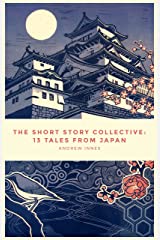




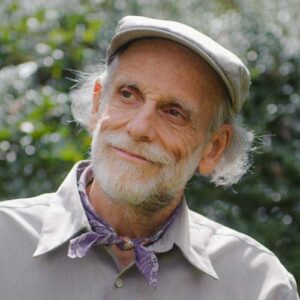

.jpg)
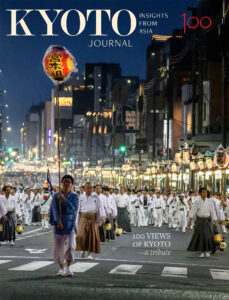
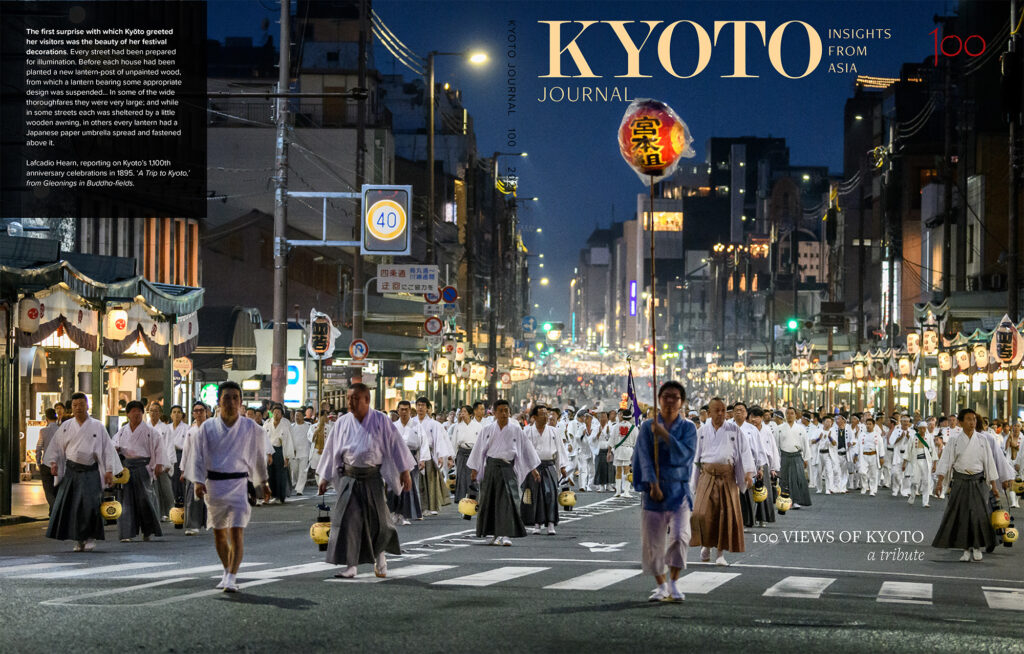


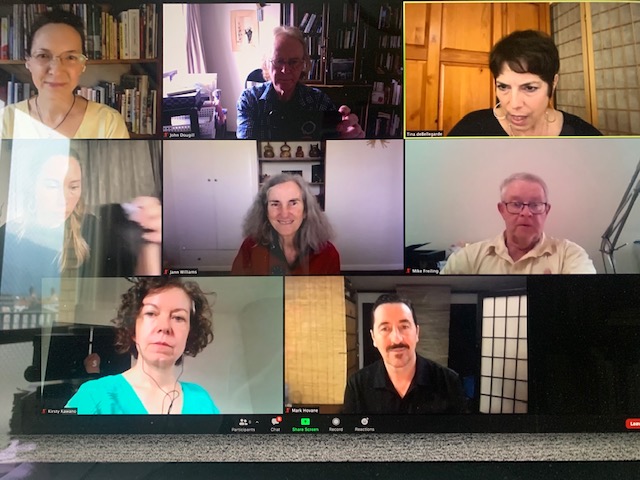

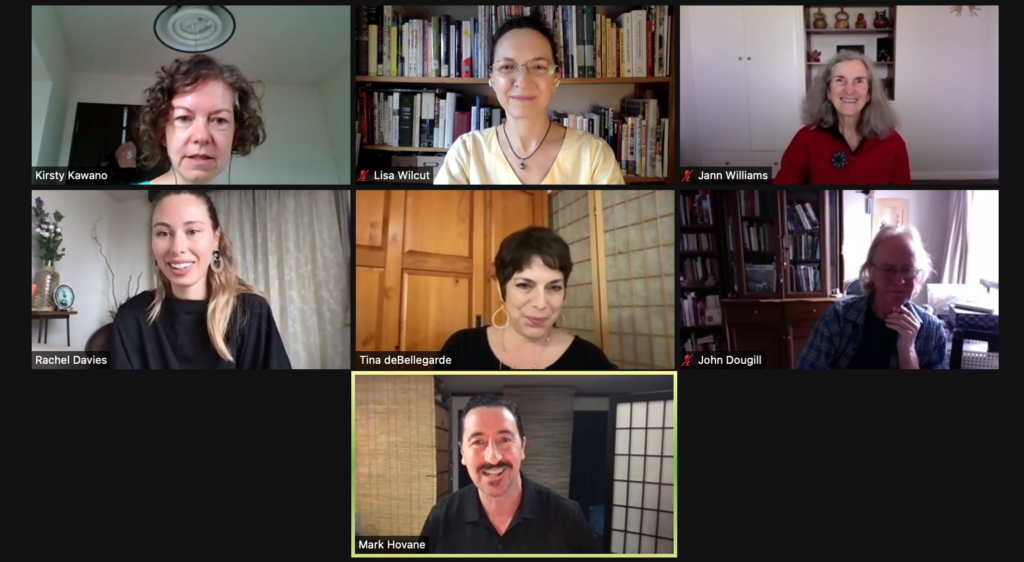





Recent Comments